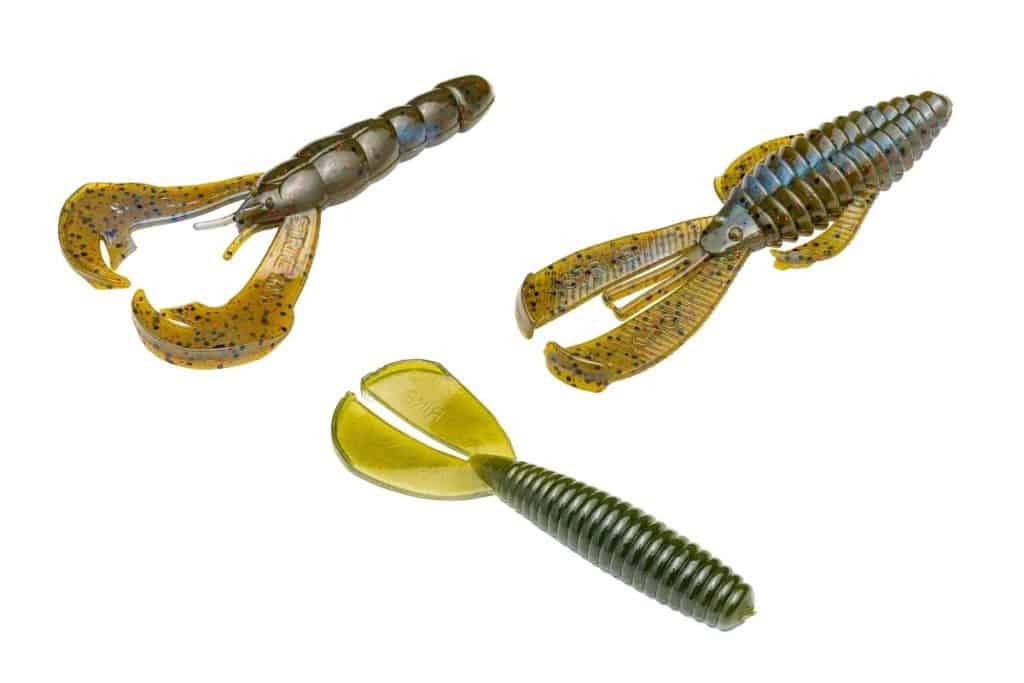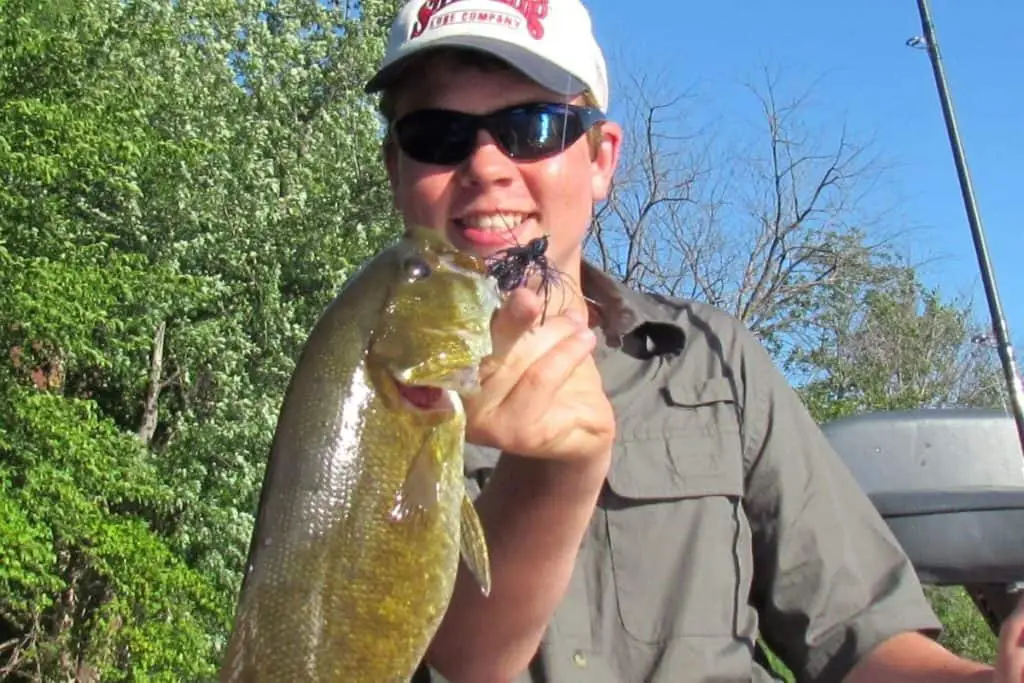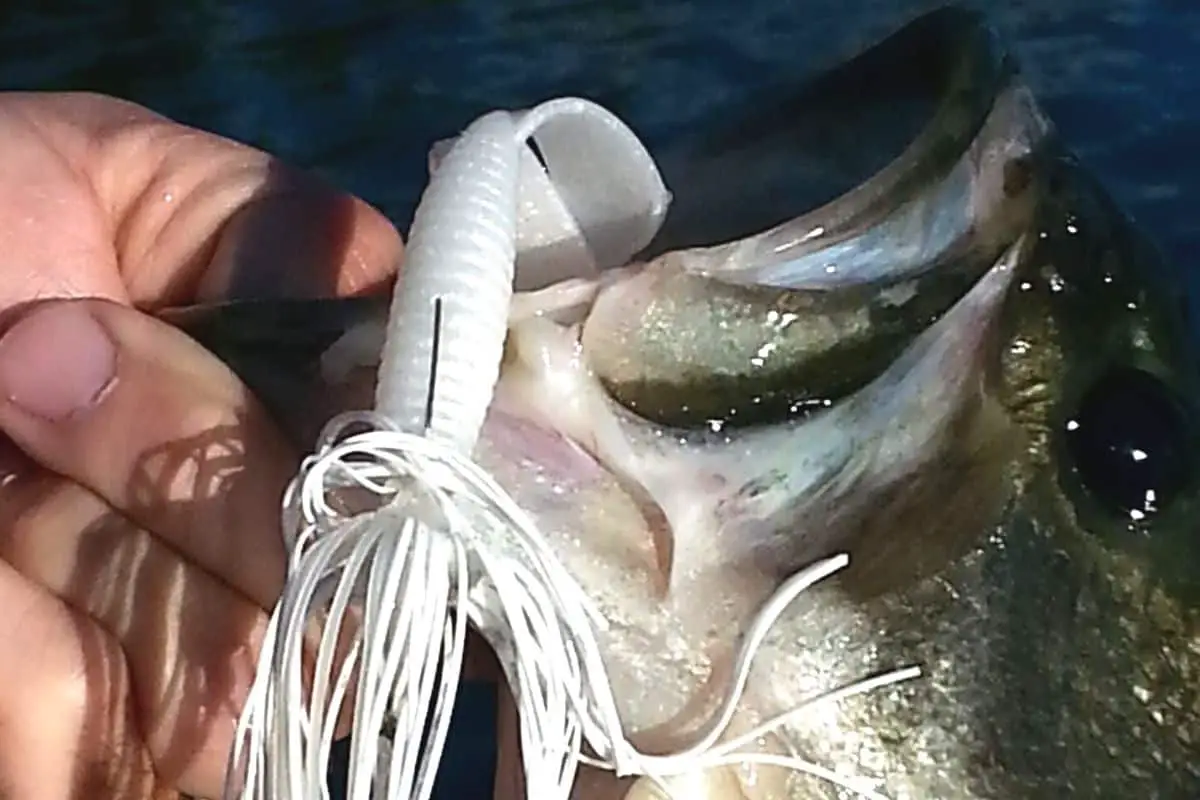Fishing a jig has long been a staple for bass. It mimics a variety of prey species and can be fished anywhere and all throughout the year. One of the key choices to consider when jig fishing for bass is what type of soft plastic trailer to use.
A soft plastic trailer for bass jigs should be chosen based on presentation. Bigger plastics with more surface area can slow the fall of a jig while slimmer profile plastics will let the jig fall faster. When swimming a jig, a trailer should be used that enhances the swimming action.
One of the great joys of bass fishing is the variety of options available to anglers. Yet this can also be one of the more frustrating aspects.
Why Do Anglers Need to Put Something on a Bass Jig?
While a bass jig will catch fish with no soft plastics put on them, they do much better when a jig trailer is added.
Serious jig anglers will adjust their choice of plastic trailer based on how they choose to fish. They also consider the type of cover or structure being targeted.
By adding a soft plastic to a bass jig, the angler is able to increase the profile of the lure making it appealing as a meal worth the effort.
Bass survive by consuming more calories than they burn. When a potential meal meets this criterion, the survival instincts of a bass let the fish know it is a worthy option. Yes, bass do eat small morsels when something happens to wander right in front of them, but they will not chase something all over the lake that is not worth it.
This basic thought process is what makes adding trailers to jigs so effective.
Soft Plastic Jig Trailers and Fall Rate
Adjusting the rate of fall as a jig drops vertically through the water column can greatly alter the success of a bass angler.
The type of plastic jig trailer chosen can impact fall rate.
As a rule, most bass anglers like their jigs to fall slower in stained and dirty water and faster in clear water.
This thought process has to do with how well a bass can see.
Bass in ultra-clear conditions rely heavily on sight while bass in dirtier waters will primarily use their lateral lines. They pick up vibrations and then key in on their target visually as they get closer to it.
This is why fall rate is important.
Selecting a plastic jig trailer that has more bulk, appendages, or flat surface area will resist the water as the weight of the jig pulls it down. This slower fall is ideal for bass in dirtier water. They can feel it and then have more time to zero in on it visually before it falls out of sight.
Slower fall rates can also be key to more bites in very cold water no matter the clarity.
In gin-clear water, faster fall rates are more apt to trigger what bass anglers call a reaction strike.
Imagine a largemouth sitting suspended on a dock piling. If a jig flashes by them only inches from their face, they are likely to react. Much as we would react when someone flicks their hands in our eyes. That is how a faster fall rate can trigger bass to bite
(Here is a more in-depth article on triggering bass to bite.)

Jig Trailers for Swimming Presentations
While many bass anglers flip and pitch jigs into cover, this lure is also an excellent tool for a swimming presentation.
The head design is different for a swimming jig, but the soft plastic trailer choice is still important.
Most often, anglers will choose a plastic that helps them to mimic a baitfish of some sort. That could be anything from a shad to bluegill.
On my home waters, there are no shad so bluegills are an important food source. I will either use a Rage Menace twin-tail grub trailer or a Rage Craw. Most of the time I rig the plastic so the tails are perpendicular to the head of the jig, but rigging the plastic in-line with the jig head is also excellent and makes for a visually larger morsel for a bass to eat.
(Here is an article on a swimming jig presentation called the Alabama Shake.)
Jig Trailers for Bottom Bouncing and Dragging Presentations
Bass jigs are very effective when pulled across the bottom of a lake or river. If the waters you fish are rocky in composition, so much the better.
Crawdads are a top source of food for bass and a jig matched with the right soft plastic trailer mimics this important prey species effectively.
A plastic craw is a natural choice. Other popular options also include the twin tail grub and even a small creature bait.
The size and profile of the plastic jig trailer is one of the more important options when choosing what to put on the lure.
Many soft plastic lure manufacturers offer the same lure in several size offerings. On some days, you may choose to put a larger craw on the jig. On other days you may find the smaller option draws more strikes.
Matching the size of the forage is a good starting place.

Color Selection for Bass Jig Trailers
When selecting a soft plastic for a bass jig trailer, most anglers will choose something that matches or is a continuation of the jig itself.
For example, a black-blue ¼ oz jig might be paired with a black-blue craw. Other great options would be a solid black craw, or another color that works well with the jig itself.
The easiest place for bass anglers to start their jig and soft plastic trailer selection is by matching the forage they are attempting to mimic.
Crawdads molt and go through several different color phases throughout a season.
Are they greenish in color, brown, or are they the reds and oranges that are prevalent when the molting takes place? Flipping a few rocks along the shoreline can soon tell you what colors to start selecting if crawfish is the species you are looking to imitate.
When swimming a jig, I will try to match the baitfish in the area.
This could be whites and silvers if there are shad present. Otherwise, I will select more bluegill patterns.
(Here is an article about choosing colors for bass jigs.)
Experiment With Jig Trailers When Bass Fishing
There are days when your first attempt at selecting a jig trailer and color pattern is going to work well.
On other days it may not.
Experiment with the size, color, and speed of your presentation until success is repeatable. You will for sure find a combination that becomes your go-to confident lure and soft plastic trailer.
Tight lines. Be safe and make sure to encourage someone today. You never know how you may change their life forever.
Isaiah 6:8

